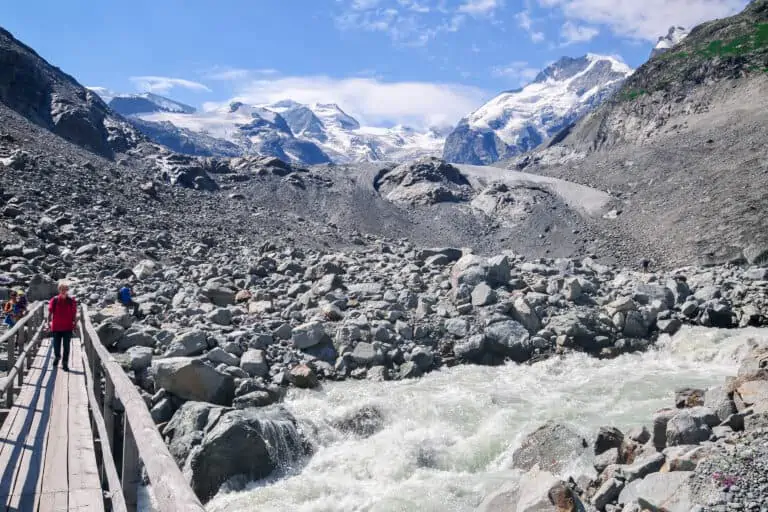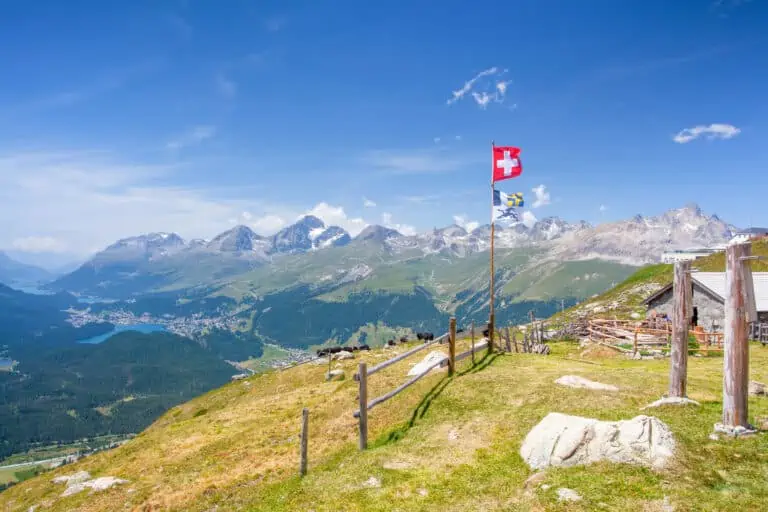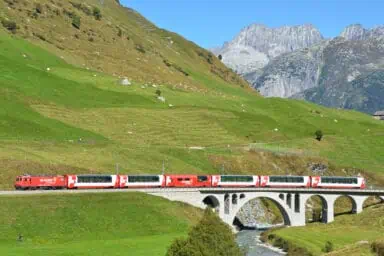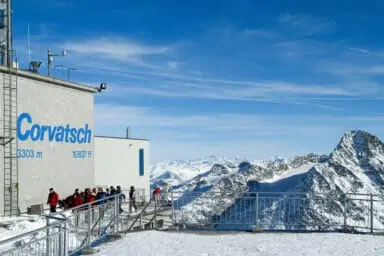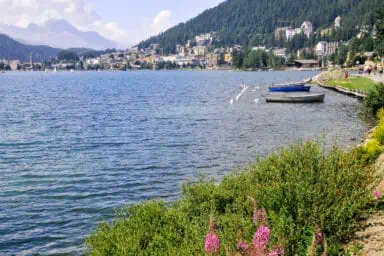What to see and do in the Engadine 
Offered by Swiss Activities: www.swissactivities.com
- Easy, online, free cancellation in most cases
- Extra Support: if you buy here, MySwissAlps can also assist if you have questions about your order.
Offered by GetYourGuide: www.getyourguide.com
- Easy, online, free cancellation in most cases
- Best Price Matching: GetYourGuide will pay the difference if you find a lower price.
- Extra Support: if you buy here, MySwissAlps can also assist if you have questions about your order.
Must do's in the Upper Engadine
If you have limited time available in the Upper Engadine, this is what we recommend:
- The absolute best way to travel to or from the Upper Engadine is by Glacier Express or Bernina Express.
- Besides that, your focus should be on snow activities in winter and hiking in summer.
- Try to include at least one viewing point in the mountains.
Mountains in the Upper Engadine
There are lots of cable cars and mountain trains in the Upper Engadine. From these mountain tops you can start hiking or enjoy the wonderful views of the valley and its lakes.
Lagalb and Diavolezza at the Bernina Pass
- Lagalb is a mountain on the Bernina Pass. Although this area strictly isn't part of the Upper Engadine, you can easily reach Lagalb from Pontresina: first by train, then by cable car.
- Diavolezza offers an up-close view of the Piz Bernina, the highest mountain in Graubünden.
Mountaintops near St. Moritz
From west to east, these are the mountains you can visit in the St. Moritz region:
- Furtschellas. A cable car leaves from Sils-Maria. The top station has lovely views down on the lakes of Sils and Silvaplana.
- Corvatsch. This is an amazing high-altitude viewpoint, and one of the main starting points for ski trips in winter. Mid-station Murtèl is great for hikes. Learn all about on our Corvatsch page.
- Piz Nair, to be reached from the center St. Moritz. The first two sections consist of funiculars to Chantarella and Corviglia. Next, a cable car brings you to the top station Piz Nair. We love the views of the Engadine Valley and the remarkably colored rocks (visible if there's no snow in summer).
- The Signalbahn, to be reached from St. Moritz Bad. A short cable car ride gets you up to a pretty viewing point.
- Muottas Muragl, which starts near the rail station Punt Muragl between Pontresina and St. Moritz. The funicular ride to the top is spectacular. A wide view over the mountains of the Bernina range and the lakes south-west of St. Moritz unfolds. You can dine and even spend the night here.
- Alp Languard. This chair lift from Pontresina operates in summer.
Must do's in the Lower Engadine
You don't want to miss the Swiss National Park. There's an information center in Zernez, and bus services across the Ofen Pass to Müstair offer the opportunity to visit the park and start hiking.
For a great view of the valley, take the cable car from Scuol up to Motta Naluns.
Our hiking tips for the Engadine
To us, the Engadine is one of Switzerland's best hiking areas. There's great variety: you can make very easy hikes on the valley floor, intermediate routes on the slopes above the valley, and challenging alpine hikes.
Some of our favorites are:
- The Via Engiadina. This is a long-distance trail, all the way from Maloja (in the south-west of the Upper Engadine) to Vinadi (in the north-east of the Lower Engadine). You can pick any stage that suits you, or walk several stages in multiple days. We love the lakeview stretch between Maloja and St. Moritz!
- The hike from Murtèl to Pontresina through the lovely Roseg Valley.
- The hike from Piz Nair down to Spinas and Bever in the Bever Valley.
- The panoramic route between Alp Languard and Muottas Muragl.
- The scenic, educational route to the Morteratsch Glacier.
- The scenic hike in the Val Sinestra north of Scuol, from the hamlet of Vnà to the hotel-restaurant Hof Zuort.
Scenic train and bus rides in the Engadine region
Nearly every train and bus ride you make in the Engadine is scenic. Below are our top picks.
- The bus ride from St. Moritz to Maloja along the lakes is highly recommended. You can continue to the Bergell Valley via the winding pass road.
- The train ride from St. Moritz to the Lower Engadine is scenic during each and every stage. You'll see the valley getting lower and narrower, and you'll pass one pretty village after the other.
- The bus ride from Zernez to Val Müstair. The Ofen Pass in the Swiss National Park will be crossed. In Val Müstair, you can visit the pretty St. John's Monastery.
Bus trips into Italy from the Engadine
The Engadine borders northern Italy. These bus rides into Italy make for a nice day trip, and they're covered by a Swiss Travel Pass:
- The Palm Express bus ride from between St. Moritz, Chiavenna in Italy, and Lugano.
- The ride to Chiavenna from Splügen, over the Splügen Pass.
- The Bernina Express bus ride between Lugano, Menaggio, and Tirano.
- The bus between the Bernina Pass and Il Fuorn in the Swiss National Park, via Livigno in Italy.
- The bus ride between Val Müstair and Tirano, via Bormio in Italy.
Travel info and map of the Engadine 
How to reach the Engadine by public transport
You can best travel to the Engadine by train or bus.
The main train and bus routes to the Engadine are:
- By train from the north, via Landquart and the Vereina Tunnel between Klosters and Sagliains. A train journey Zurich-Zernez via this route takes 2h20. If you continue to St. Moritz, the ride from Zurich takes 3h25.
- By train from the north, via Chur and Filisur (part of the Glacier Express and Bernina Express routes). Zurich-St. Moritz via this route takes 3h25, Zurich-Zernez is 4h10.
- By train from the south in Italy. If you travel from Italy, you'll enter via Tirano and follow the Bernina Express route to Pontresina/St. Moritz. A ride Milano-St. Moritz takes 4h50, the journey Tirano-St. Moritz takes 2h30.
- By bus from Lugano in the Ticino. The Palm Express route takes you via Chiavenna and the Bergell Valley to St. Moritz. This journey takes 3h35 and requires reservations. It's available in summer only. In other months, you can travel via Bellinzona and Thusis instead.
How to travel in the Engadine
The trains of the Rhaetian Railways are the main connection between St. Moritz in the Upper Engadine and Scuol-Tarasp in the Lower Engadine. Nearly all towns in the valley have a train station where you can board these trains.
In addition, there are train routes to the Bernina Pass in the south, and the Albula Valley, Chur, and Davos in the north.
Buses complement the train network. They're available between Maloja and St. Moritz, for example. They also run to Samnaun in the very north-eastern corner of the Engadine area, across the Swiss National Park, and in many of the Engadine's side valleys.
All train, bus, and mountain routes can be found in the Swiss timetable.
Travel passes for the Engadine
Many Swiss rail passes as well as the graubündenPASS allow free traveling by trains and buses. Depending on which pass you have, discounts on cable cars and other mountain transport may be included as well.
Selected hotels in the Engadine offer discounted or free mountain trips:
- In summer, the "Mountain Railways included" formula is offered: free trips by regional cable cars and mountain railways for guests booking at least 2 nights between May and October. Free trains and buses are often included too.
- From late October to early May, many hotels offer a discounted ski pass if you stay at least one night: the "Sleep + Ski" formula.
In addition, you can check the "Hiking multi day ticket" or the "Mountain Railways Summer Pass". Both include free mountain transportation in the Engadine. The Hiking multi day ticket is available for 2 to 7 days, the Mountain Railways Summer Pass is valid during the entire summer season.
How to reach the Engadine by car
If you come by car, you'll have to cross one or more mountain passes. The main ones are:
- The Julier Pass between Albula and Silvaplana.
- The Albula Pass between Preda and La Punt-Chamues-ch.
- The Flüela Pass between Davos and Susch. An alternative is the Vereina car train.
- The Maloja Pass between the Bergell Valley and Maloja.
- The Bernina Pass between Poschiavo and Pontresina.
The Albula Pass and Flüela Pass are closed in winter. Make sure to be well-prepared if you come by car and study our Switzerland driving guide first.
Map of the Engadine in Switzerland
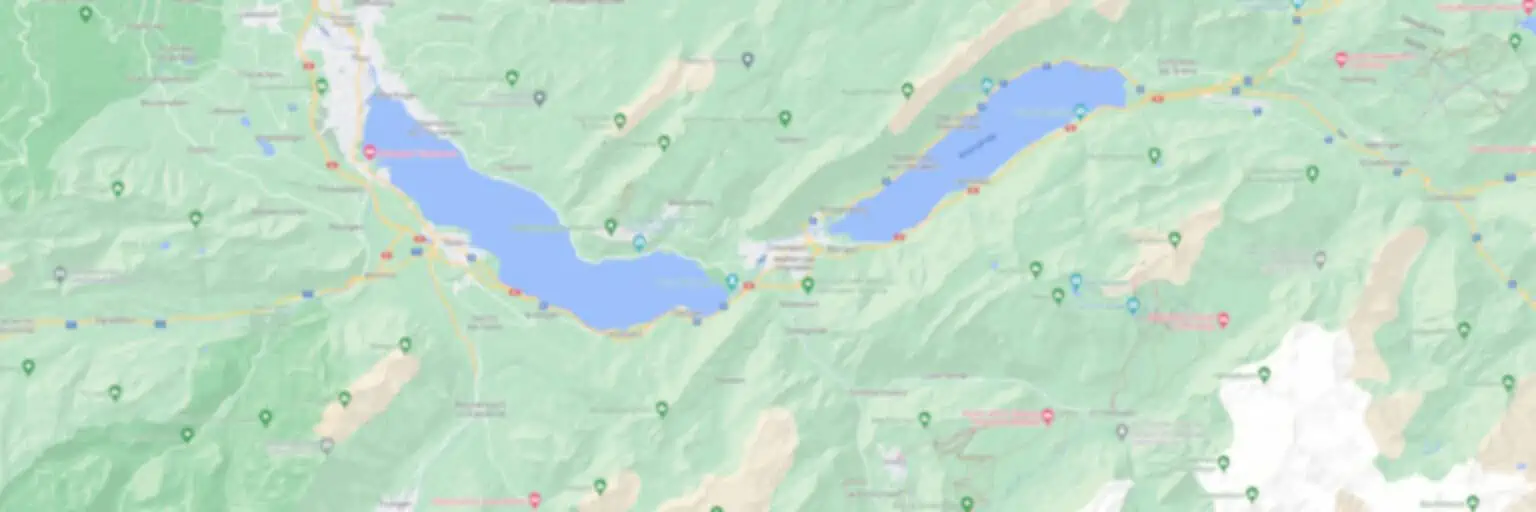
The best months for a stay in the Engadine 
Our recommendation is to visit the Engadine in early January to late February, early May to late October and mid December. You're mainly dependent on outdoor activities in this area. So it's best to visit in months with either sufficient snow for winter fun, or the best circumstances for summer hiking and cycling.
Late December to late February
The best winter period is late December to late February. This is when snow down in the villages of the Upper Engadine is most likely. Such snow-covered scenery is simply wonderful, and these circumstances allow for all sorts of winter activities in the valley and in the ski areas.
Up in the mountains, the snow season can last until March or even April, but this is no guarantee.
March and April
March and April are low-season months. In the Lower Engadine, it can start feeling like spring a bit by late April. If you want absolute peace and quiet, you may like a visit to Zernez and its surroundings by this time of the year. You'll have to be satisfied with making valley hikes though, as higher mountain trails are very likely to be inaccessible.
May and June
May to June are great for a spring experience. But mind that not all mountain transport in the Engadine may be running yet, and that alpine hikes usually can't be made yet.
July, August and September
The high-season summer months are best if you prefer the highest possible temperatures and if you're interested in high-altitude hiking or biking. This is when you can expect the least amount of snow in the mountains.
Our personal favorite: October
The Engadine in October is mesmerizing. The valley is famous for its pine trees, which turn into wonderful shades of yellow, orange and red as autumn progresses. It's hard to predict when exactly the prettiest colors can be seen. Mid-October is your best bet.
Weather in the Engadine 
What the climate is like
The Engadine is a relatively cold and dry area. The cold is due to its high location. The low amount of precipitation is caused by the fact that the mountains in the west and north often hold back low-pressure areas.
Most rain falls in the summer months, especially from June to August.
In winter, snow instead of rain falls in the mountains and the higher part of the valley: the St. Moritz region.
Which temperatures to expect
Temperatures are lower at higher altitude. Typical daytime temperatures for St. Moritz (1775 m) are 16-19°C in summer and -2°C to 3°C in winter. Expect a few degrees more at lower altitude, for example in Zernez (1474 m). Daytime summer temperatures here are about 20-23°C.
The "Engadinwind"
A typical phenomenon for the Upper Engadine is the "Engadinwind" or "Malojawind". This wind of 4-5 Beaufort blows from the town of Maloja in the west and can be felt throughout the Upper Engadine. It's ideal for surfers and sailers at the lakes of Sils, Silvaplana and St. Moritz.
The wind can cause the perceived temperature to be lower than the actual temperature. You'll notice this especially when you're taking a break in the outdoors, not moving for a while. But if you're around the corner in one of the side valleys, it can suddenly feel a lot warmer.
Dress in layers to adapt to varying temperatures. We recommend bringing along a windproof jack in each season.
5-day weather forecast for Zernez
Below is a sample forecast for the village of Zernez, in the middle of the Engadine. There can be significant regional and even local differences, so always consult the specific short-term forecast for your destination.

Hotels and holiday homes in the Engadine 
Nearly all villages in the Engadine, however small, have one or more hotels. But you'll also find a vast offer of charming holiday apartments with beautiful views.
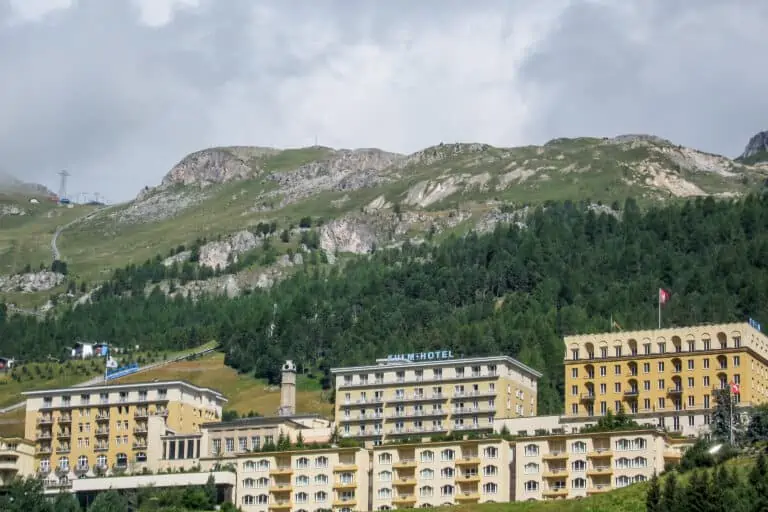
Hotels in St. Moritz, Switzerland
Why we recommend the Engadine
To us, the Upper Engadine is one of Switzerland’s best holiday regions. We have spent summer and winter holidays there, and we keep coming back. This is what makes the Engadine so special to us:
- It’s at high altitude, especially the Upper Engadine. This means that temperatures are pleasant even in summer, and that snow in the villages is likely in winter.
- It’s one of the driest regions in Switzerland, as clouds are mostly blocked by the mountains in the west and the north.
- The Engadine Valley has countless unspoiled side valleys which are magnificent for hiking.
- The lakes west of St. Moritz are beautiful and add variety to the landscape.
- St. Moritz and its nearby villages can be a bit touristy, especially in winter. And there are many travelers enjoying the Glacier Express and Bernina Express trains, that both cross the Engadine. But other than that, it’s all about nature here.
- We love the typical architecture of the houses: they have bright-colored, thick, plastered walls, adorned with drawings and Rhaeto-Romanic sayings.
Where to stay in the Engadine
If you want to spend time in the Engadine, we recommend the following towns:
- Sils – if you prefer a beautiful, authentic town amidst lakes, and if you don’t mind catching a bus instead of a train.
- St. Moritz – if you want to be located centrally and want to have several shops and restaurants to choose from. This is the perfect place if you like luxury as well.
- One of the towns north-east of St. Moritz if you appreciate a central location, but value peace and quiet too. We’ve been based in Bever, La Punt-Chamues-ch and Zuoz ourselves, and we like each of these villages. They provide perfect proximity to the lakes and mountain tops near St. Moritz, as well as to the Lower Engadine. Thanks to the frequent train connections, a ride south to the Bernina Pass, or north to Chur or Davos, is no problem either.
- Zernez – if you want to focus on the Lower Engadine and Switzerland’s National Park.
- Samnaun – if you prefer a high-alpine area for hiking and winter sports.
What the Engadine is like
The Engadine is a high-altitude valley (1800-1000 m altitude), through which the river Inn runs. Throughout the valley, there are beautiful and authentic villages and countless side valleys. A train ride here is extremely scenic.
In the south-western part, called “Oberengadin” (the Upper Engadine), you’ll find lakes and high mountain tops. The lower and narrower Unterengadin (the Lower Engadine) is defined by even smaller villages, remote valleys, wildlife, and Switzerland’s National Park.
From west to east, the Engadine holiday region consists of these areas:
- Val Bregaglia / Val Bergell (the Bergell Valley)
- Oberengadin (the Upper Engadine)
- Unterengadin (the Lower Engadin)
South of the Oberengadin is the mountain area of the Bernina Pass. Learn about it in our Graubünden guide.
The romantic Bergell Valley
The Bergell Valley (called “Val Bregaglia” in Rhaeto-Romanic and “Bergell” in German) officially isn’t part of the Engadine Valley, but we consider this to be part of the Engadine holiday region. It’s at a much lower altitude than the Engadine Valley. A spectacular winding pass road connects Cassacia in the Bergell Valley with Maloja in the very south-west of the Upper Engadine.
We feel that the Bergell Valley is very romantic. The small villages and their wooden houses have a traditional look. The valley is surrounded by rugged peaks, with several waterfalls along their slopes. It’s perfect for hiking, either in the valley or higher up.
There’s no train in the Bergell Valley, but all villages can be reached by bus. There are buses east to St. Moritz. Another impressive bus ride is the one west toward Chiavenna in Italy and Lugano in the Swiss canton of Ticino. This is known as the Palm Express route.
The stunning Upper Engadine
What the Upper Engadine is like
The Upper Engadine (“Oberengadin” in German) is the higher-located western part of the Engadine, where the valley is relatively broad. Because of the altitude, there aren’t many deciduous trees here. There are conifer forests, and the tree line is relatively close to the valley floor.
This is where the beautiful lakes between Maloja and St. Moritz can be found, as well as the high peaks of the Bernina mountain range. The area offers lots of cable cars and funiculars, allowing you to take in the wide views of the valley and the peaks.
The Upper Engadine towns and their scenery
The lake area between Maloja and St. Moritz
West of St. Moritz is a wonderful lake area, with three larger lakes: those of Maloja/Sils, Silvaplana and St. Moritz. The Rhaeto-Romanic word for lake is “Lej” or “Lägh”, so you may come across this when studying maps.
The lakes make for great scenery and are perfect for easy valley walks. They’re also popular with sailors and windsurfers, because of the strong Maloja wind that blows from the south-west.
Buses connect all of the authentic towns on the lakes. The village of Maloja is at the ridge where the valley floor drops down all the way to the Bergell Valley: a spectacular sight, especially seen from the ruins of the ancient Belvedere Castle. It’s a perfect base for hikes, for example to the smaller mountain lake Lej da Cavloc.
Sils is on the plains between the lakes of Sils and Silvaplana. It’s a beautiful, peaceful village with wonderful lake views and access to the pretty Fex Valley. On the northern side of the Silvaplana lake are the villages Surlej and Silvaplana. This is where the cable cars to Corvatsch start.
St. Moritz and more nearby villages
Then there’s the famous resort of St. Moritz. Many visitors like being based here, as it’s located centrally. Others prefer nearby towns with lower-priced accommodation. These are perfect alternatives:
- Pontresina, south of St. Moritz. It’s at the foot of the famous Bernina Pass. Mountain tops close to it, such as Muottas Muragl and Alp Languard, offer great sights of the Engadine’s highest peaks. Next to Pontresina is the beautiful Roseg Valley, which is a must for hikers and photographers.
- Celerina and Samedan east of St. Moritz. Both are mid-size villages with lots of facilities for tourists, and perfect train connections to both sides of the valley.
- Bever. This small village is next to the Val Bever (“Bever Valley”), where the trains from the north leave the Albula Tunnel.
- La Punt-Chamues-ch, at the foot of the Albula pass road. The views over the valley are gorgeous, especially from the part on the western valley slopes. Opposite La Punt-Chamues-ch is the Val Chamuera: yet another recommended hiking valley.
- Zuoz, which is sometimes classified as Engadine’s prettiest town. It’s easy to understand why. The small town center is traditional and intact. Zuoz makes a great base to explore both the Upper Engadine and the Lower Engadine.
The untouched Lower Engadine
What to expect from the Lower Engadine
Even more than the Upper Engadine, the Lower Engadine (“Unterengadin” in German) is purely about great nature. Although tourists are everywhere in Switzerland, this is one of those places that aren’t touristy.
There are hardly any larger towns, and no cities at all. Even though the Lower Engadine is the lowest part of the valley, the valley floor is still relatively high: 1000 to 1600 m above sea level. That results in a climate that is colder than in many other Swiss valleys.
As you’ll mainly visit this region for outdoor activities, good weather is important.
Zernez and the Swiss National Park
One of the main towns is Zernez. This central village is the best base for trips to a very special area: Switzerland’s only National Park. It’s defined by beautiful hills and valleys, and all sorts of wildlife can be spotted. The park can best be explored on foot. A bus line ensures there are enough spots to start and end your hikes.
Scuol-Tarasp, Ftan and Guarda
Further north-east of Zernez is Scuol-Tarasp: a scenic village famous for its castle high on the hills, and with cable cars to the Motta Naluns mountain area. A bit above Scuol-Tarasp is the beautiful, traditional settlement of Ftan. And there’s yet another small gem: the village of Guarda.
Samnaun
In the north-eastern corner of the Lower Engadine, you’ll find Samnaun. Samnaun is mostly famous as a winter sports resort. Together with the area of Ischgl in Austria, it offers an international ski area. In addition, Samnaun attracts visitors because of its duty-free shopping options in over 40 stores.
Other websites of interest
- www.corvatsch-diavolezza.ch: cable cars to Lagalb, Diavolezza, Furtschellas and Corvatsch
- www.engadin.ch: transport to other Engadine mountains
- www.engadin.com: Zernez-Scuol Tourism
- www.schweizmobil.ch: the Via Engiadina
- www.postauto.ch: the Palm Express bus ride
- www.bregaglia.ch: Bergell Valley Tourism
- www.nationalpark.ch: Switzerland's National Park
Prices
- www.engadin.ch: Engadine "Mountain Railways included"
- www.engadin.ch: Engadine "Sleep + Ski"
- www.engadin.ch: Engadine "Hiking multi-day ticket"
- www.engadin.ch: Engadine "Mountain Railways Summer Pass"
- www.samnaun.ch: duty-free shopping in Samnaun
Towns in the Engadine 
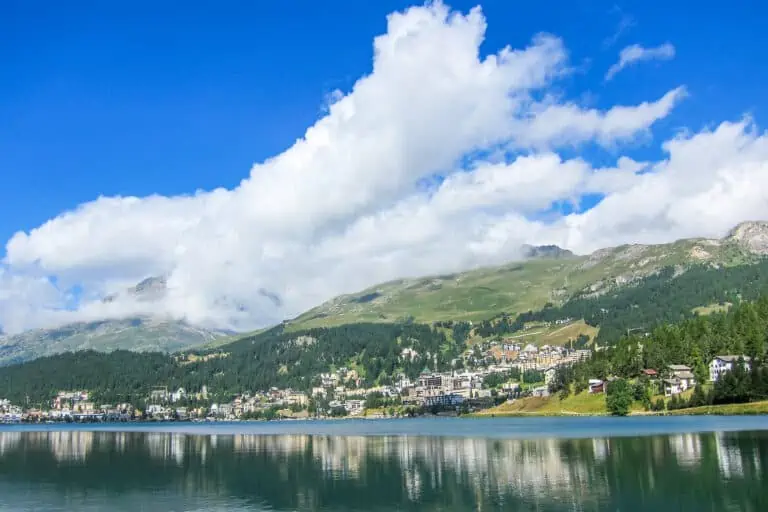
St. Moritz
Multiple-day itineraries including the Engadine 
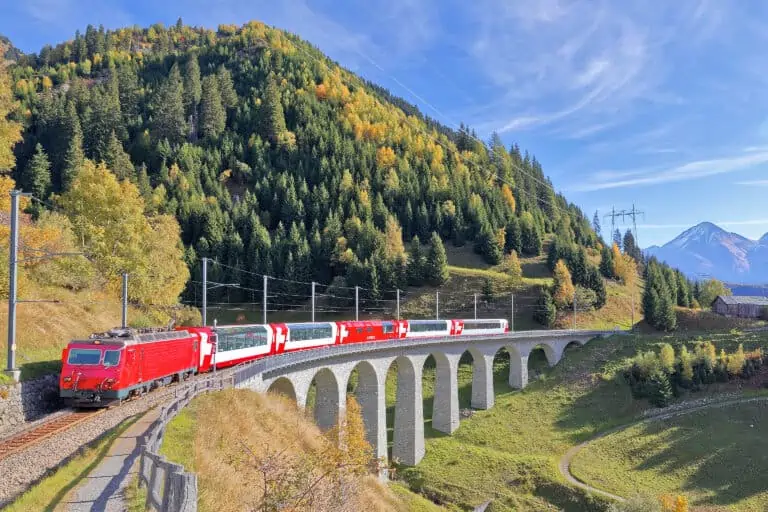
Glacier Express: 3-day classic tour from Zurich
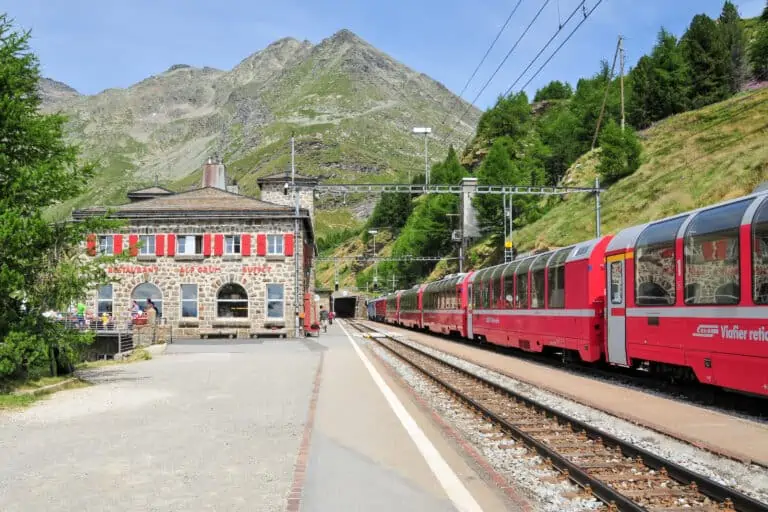
Ultimate scenic trains
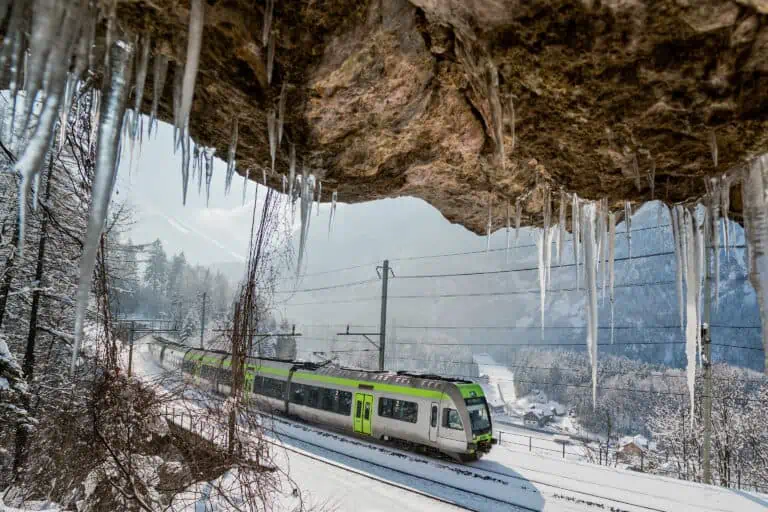
Scenic trains winter
The Engadine in our blog posts 
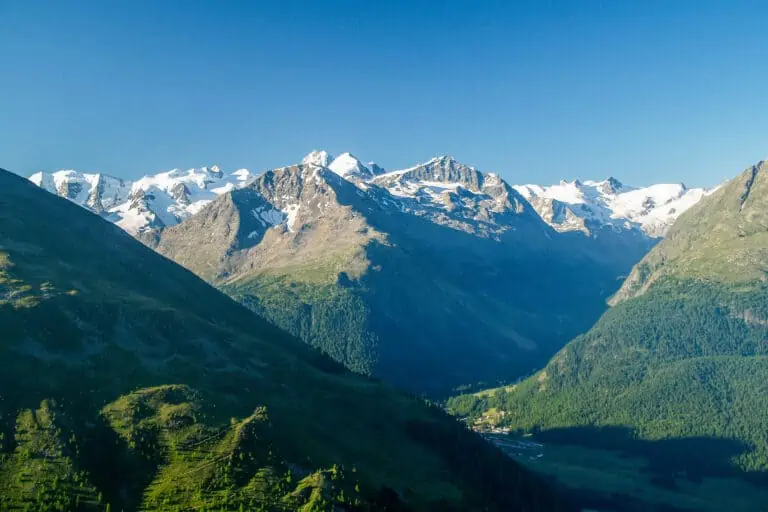
Hike Muottas Muragl-Alp Languard
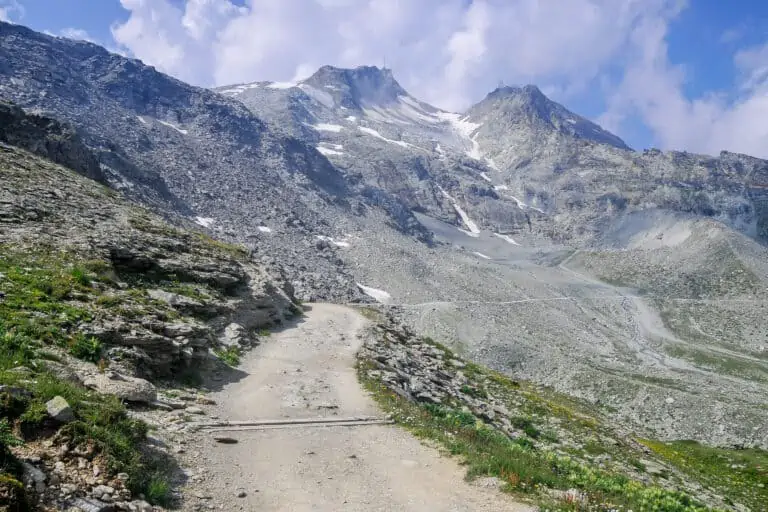
Hike Murtèl-Pontresina
